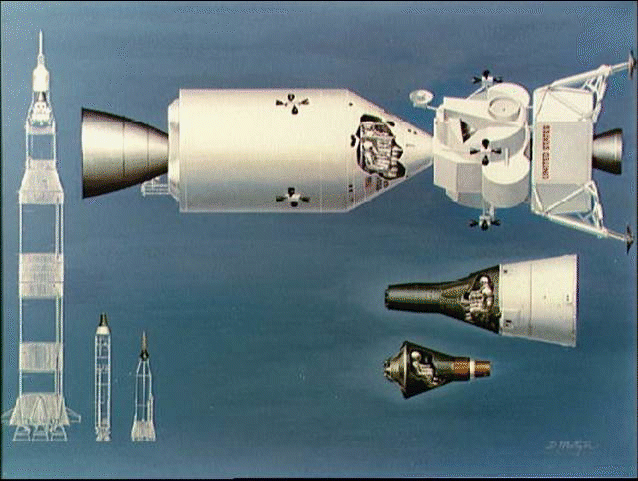
Demystifying Rocketry: How Rockets Work and Rocket Systems
Introduction
Rocketry has captured our collective imagination since its inception, propelling humanity into the vast frontiers of space exploration. These marvels of engineering have enabled us to reach celestial bodies, study distant galaxies, and expand our understanding of the universe. In this blog post, we will delve into the inner workings of rockets and explore the intricacies of rocket systems.
I. Understanding Rocket Propulsion
At its core, a rocket is a vehicle that uses the principle of action and reaction to produce thrust, thereby propelling itself forward. Newton’s third law of motion—every action has an equal and opposite reaction—forms the foundation of rocket propulsion. A rocket works by expelling high-speed exhaust gases in one direction, causing a reactive force in the opposite direction, propelling the rocket forward.
II. Rocket Components
- Propellant: The propellant is a mixture of fuel and oxidizer stored in separate compartments within the rocket. When combined and ignited, these substances undergo a controlled combustion process, releasing vast amounts of energy in the form of hot gases.
- Combustion Chamber: The combustion chamber is where the propellant mixture is ignited. It is designed to withstand high temperatures and pressures generated by the burning propellant.
- Nozzle: The nozzle serves as the exit point for the hot gases generated in the combustion chamber. Its shape is crucial, as it determines the velocity and direction of the exhaust gases. The nozzle is typically convergent-divergent, allowing for expansion and acceleration of the gases to supersonic speeds.
- Payload: The payload refers to the cargo carried by the rocket, such as satellites, scientific instruments, or crewed capsules. Rockets are designed to accommodate different payload sizes and weight requirements.
III. Rocket Systems
- Launch Systems: Launch systems encompass the infrastructure and mechanisms necessary for launching a rocket into space. They include launch pads, which provide a stable platform for the rocket during the pre-launch phase, and launch towers, which house various systems and facilitate the transfer of fuel and electrical connections.
- Guidance Systems: Rockets employ sophisticated guidance systems to ensure their trajectory and orientation align with the desired flight path. These systems incorporate onboard sensors, such as gyroscopes, accelerometers, and GPS, to collect data and make precise adjustments to the rocket’s attitude and direction.
- Staging: Many rockets adopt a staging configuration to reach higher altitudes and velocities efficiently. Staging involves the separation of rocket stages once their propellant is depleted. Typically, a rocket has two or more stages, each with its engines and propellant supply. As each stage completes its burn, it is jettisoned, reducing the weight and allowing the remaining stages to continue the ascent.
- Recovery Systems: Some rockets incorporate recovery systems to retrieve and reuse certain components, reducing costs and improving sustainability. For example, SpaceX’s Falcon 9 rocket features a first-stage booster that can autonomously land back on Earth after delivering its payload into space.
Conclusion
Rockets are marvels of engineering that enable us to venture beyond the confines of our planet. By harnessing the principles of physics and employing intricate systems, these incredible machines have revolutionized space exploration. Understanding the fundamentals of rocket propulsion, the various components, and the systems involved provides us with a glimpse into the remarkable endeavors of spacefaring missions. As we continue to push the boundaries of space exploration, rockets will remain the steadfast companions propelling humanity’s quest for knowledge, discovery, and exploration into the cosmos.

The study of rockets is an excellent way for students to learn the basics of forces and the response of an object to external forces. There are four major components to any full scale rocket; the structural system, or frame, the payload system, the guidance system, and the propulsion system. On this page we show some types of payloads that are carried on rockets.
The payload of a rocket depends on the rocket’s mission. The earliest payloads on rockets were fireworks for celebrating holidays. Some of the early ideas for booster staging were developed in an effort to loft fireworks as high as possible. During World War II, the fireworks were replaced by several thousand pounds of explosives on the German V2 rocket. Following World War II, many countries developed guided ballistic missiles armed with nuclear warheads for payloads. The same rockets were modified to launch satellites with a wide range of missions; communication, weather monitoring, spying, planetary exploration, and observation. On the figure we show a picture of the Hubble Space Telescope which has been used to explore deep space from low earth orbit.
The most important payload carried by a rocket into space is a human being. In the early 1960’s, U.S. military rockets like the Redstone, Atlas, and Titan missiles were “man-rated” to carry the Mercury and Gemini spacecraft into orbit. In the Soviet Union, an intercontinental ballistic missile was likewise modified to launch their Vostok, Voskhod, and Soyuz manned-spacecraft. On the top figure, we show a Gemini spacecraft which was first flown in the mid-1960’s. The Gemini carried two astronauts and was used to develop the techniques of rendezvous, docking, and space-walking, and to study the effects of space flights of up to two weeks duration. During the Apollo moon program, a family of large boosters called Saturn were developed in the U.S. The Saturns were strictly civilian launchers and were not used for military purposes. The next American crewed launcher was the Space Shuttle which has been used to place and service both military and civilian satellites in orbit, to provide a medium duration on-orbit capability, and to carry material and crews to and from space stations.


